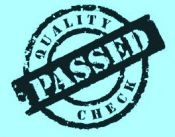New V-Carbon “Stamp of Approval”
Buyers of voluntary carbon offsets have no shortage of projects to choose from, but where is the line between choice and information overload? The Environmental Defense Fund says we crossed it long ago, and aims to simplify the whole process with an online list of eleven projects whose offsets it believes will stand the test of time. The Ecosystem Marketplace gives it a click.

Buyers of voluntary carbon offsets have no shortage of projects to choose from, but where is the line between choice and information overload? The Environmental Defense Fund says we crossed it long ago, and aims to simplify the whole process with an online list of eleven projects whose offsets it believes will stand the test of time. The Ecosystem Marketplace gives it a click.
11 September 2008 | Earlier this week, we examined a buyer’s guide for evaluating developers of voluntary carbon offset projects, and now comes CarbonOffsetList.org, a guide that lists all projects that meet nine criteria that Environmental Defense Fund believes make an offset trustworthy.
More than 70 projects have been submitted to date, but the site debuted with just eleven projects and is designed to evolve as new projects meet the criteria.
Not a New Standard
EDF says the approach does not represent a new standard because it is results-oriented and not procedure-oriented.
“Our approach focused on the environmental integrity of the projects that were submitted for review and the ability to demonstrate measurable and verifiable proof of greenhouse gas reductions – rather than specific project types or technologies,” says Ron Luhur, EDF Carbon Markets Specialist.
“Being technology and standard neutral was important to us because we believe that we can’t afford to overlook any credible emission reductions given the urgency of the climate crisis.”
As a result, the list could include projects from controversial technologies that many standards eschew – such as geological sequestration.
“We basically say that projects employing technologies like that have to demonstrate that they have taken steps to account for reversal,” says Luhur. “Rather than disregard the technology, we say you can deploy it under an extremely watchful eye.”
The Living List
Of the eleven debut projects, eight achieve reductions through landfill gas destruction – largely because such projects are easy to verify.
“We’re looking for anything that generates a real and measurable reduction,” says Luhur. “The proposals we received are everything from methane to geological sequestration and forestry. Some won’t make the list, but some projects are just too early in the development phase to get listed, while others are almost there but still need some documentation.”
As more projects meet the nine criteria – which were established through a best practices review process involving a committee of external experts in the fields of science and policy – they will also be posted on the site.
“If all goes according to plan, these offsets will sell out, and we’ll have to come up with a new list again very soon,” says Luhur.
In fact, this is not the first time EDF created such a list. Several years ago, the non-profit, with assistance from Environmental Resources Trust created a “short list” of carbon offset providers that met their decision criteria. The list, while still heavy on methane destruction, included a more diverse set of projects, including credits from geological sequestration. This year the team focused on screening projects rather than offset providers, since most providers have a portfolio of credits from varying sources.
Voluntary vs. Pre-Compliance
Luhur adds that the criteria were developed to create trustworthy voluntary credits, and not to conform to any existing or evolving compliance regimes.
“If the criteria resemble those of state regimes, it’s only because the goals are similar and not because we are trying to build a pre-compliance portal,” he says. “We want to make sure that an offset really does represent an emission reduction, and compliance regimes have the same goal – although we have taken a lot of the best thinking from some of the compliance regimes and from the voluntary standards.”
Steve Zwick is managing editor of the Ecosystem Marketplace. He can be reached at [email protected].
Please see our Reprint Guidelines for details on republishing our articles.
Please see our Reprint Guidelines for details on republishing our articles.

